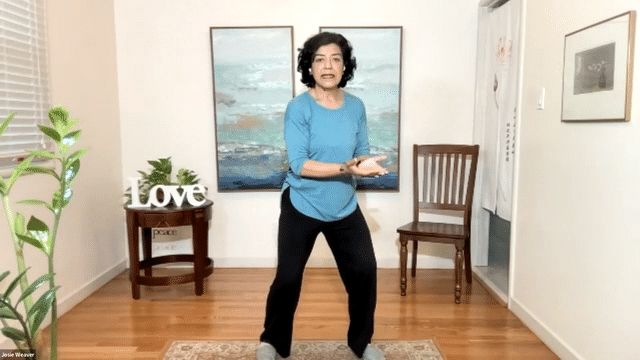The Release of Hope
The Release of Hope
Gather hope, release hope. Repeat.
What does it mean to have hope?
I have been thinking of hope as a heart and mind skill for the times we live in. Emily Dickinson wrote a beautiful poem called “Hope” is the thing with feathers which about hope and resilience. With the chaos and stress of ordinary life combined with the pain and challenge of what is happening in the world right now, there is a temptation to lose hope. As challenging as the moment is, it is also an amazing moment of possibility and spiritual power when you consider what hope is and how you look at hope.
A HeartMind Practice
There is a beautiful and simple Qigong movement that can be a meditation on hope, and it is a practice that goes by two names, which are “Gather and Release” and “The Release of Hope.” The two names illustrate the dual energies involved in having and losing (releasing) hope. When you do this HeartMind practice, you can use it to work with challenging situations, what we call the stuff of life. Doing repetitions of this practice in a slow and flowing way may even help you get in touch with the kind of life-giving hope that is not for things or particular outcomes. Understanding hope this way nurtures healing energies for yourself and may help you keep finding the “gold” in a situation, which is the treasure or the heart lesson in the situation that leads to growth and healing.
The Movement with Two Names
The “Gather and Release” name speaks to the fact that we gather energy and release it throughout the span of existence. Things come and go. Things appear, disappear, and reappear in awareness. This name speaks to cultivating and sharpening powers of observation and being able to see ourselves clearly.
The other name of this movement being “The Release of Hope” points to the emotion of what is happening in the story of our lives. This makes it a HeartMind practice that gives us a way to listen to our thoughts and feelings in a gentle way. Taking a moment to listen in this way honors our personal story. It is a process to help us recognize and make sense of what we have been through or what we are dealing with, because hope dwells in the heart and can give us a sense of lightness.
There is great short story attributed to Ernest Hemingway that illustrates this kind of practice of taking a human story and examining the “hopes” that may be involved:
For sale: baby shoes, never worn.
Not only is this micro-story a whole story told in six words, but it evokes a sense of loss of hope that could be sad and tragic. It is also true that there could be no tragedy at all: the baby shoes are simply new and never worn, and the hope is to sell them to a willing customer. It is always interesting where the mind goes given a few details of any story. There is always more. Your curiosity about what is actually occurring in any story draws you into the feelings, the experience, and the personal meaning. You can be curious about your own story and situation. Examining your hopes is a way of getting to know yourself and understanding where and how your energies have been moving. There could be tender feelings here: what you hope for is important to you and speaks to what is in your heart. You must proceed with respect. Speaking about your hopes or even just considering them can be a tender and vulnerable process, because it can mean acknowledging heartbreak, tragedy, and disappointment. But it can just as easily point to joy, love, and excitement. These are some the many energies of existence. The encouragement is to not get stuck on any one energy, but to find a sense of flow so that fresh energy is always coming in and replenishing what is worn out or used up. Energy is meant to move, change and grow.
Releasing hope means losing hope on purpose and seeing what remains. It is a practice you do gently with your whole self—body, mind, and spirit—so that you may go deep, see clearly, and feel accurately. The process may bring tears of recognition of things and outcomes you had been hoping for. This can be like letting go of beliefs about yourself or about others. About life. The process can be a way of letting go of attachments and expectations, saying goodbye, and moving on with awareness and compassion. Releasing Hope may bring acceptance and quiet. In that quiet, there can be healing and forgiveness for everyone involved, including yourself.
So, releasing and losing hope on purpose is not about despair. In fact, the practice can be about compassion and understanding and learning what works best. Climate scientist, Kate Marvel, wrote a book called Human Nature that explores climate change through nine emotions and how to feel about climate change. In a recent interview by NPR, Marvel’s “take” on having hope about climate change is that hope is the “wrong question” or maybe even optional, especially when we as a society have clarity about what is needed and have a way forward. That can apply to many things! If you have clarity about the way forward, you can get busy with fulfilling the mission. Have hope if you want to, but taking action on your highest understanding is a kind of bold genius.
Times I have done the Release of Hope practice, I find it is about relief and making myself new, which at times has meant opening up to the possibility of healing my physical body or loving friends and family better. It is a “kinesthetic metaphor” for not being stuck in the feelings or experiences of the past and present, but making oneself available for the new energies and adventures that are coming or already happening. What we want to lose and release are the things we may not have realized we were “hoping for” or basing our hopes on that were not helpful after all. Sometimes that might mean recognizing and releasing preconceived notions about success, false ideas about what and how we are supposed to be or what is “supposed to” happen in a given situation. Losing hope and releasing hope can be a way of “sweeping the heart clean” and becoming available to learning and guidance. Once you release hope in this way, the energy that remains can be loving, bold and creative. Your ideas of success may change and perhaps become elevated and free in the process.
The Release of Hope: Steps
The Qigong gesture that we call “Release of Hope” is done on one side of the body, and then the other. It is okay to start on either the left or the right. Below, we start with bodyweight on the right foot, and move the hands diagonally first to the left. Then, with the bodyweight on the left foot, you move the hands to the right. The breath hold is optional. This is a great exercise to do while breathing naturally and not worrying about coordinating the movement and the breath.
Here are the basic steps:
Find a quiet space where you can commit to listen to yourself for a few minutes.
Take a few breaths and do a few little stretches to prepare yourself to notice body, breath and mind.
Enter into the listening space. Step your feet about hip-distance apart, and then shift your weight to onto the right foot as you twist a little bit in the direction.
Place your hands together so that the little finger sides of your palms touch and you form a bowl with your hands. Bring the bowl to the weighted side of the body. Take a breath, and imagine that you hold in your hands a situation that you have hopes for. It could be a situation you have just been through or that you went through long ago or something you are going through right now.
Holding your breath (or not), move your bowl diagonally from just in front of the right hip to the front of the opposite shoulder. As you shift your weight gradually to the left foot and simultaneously bring the bowl diagonally to the front of the left shoulder, softly and gently release your breath and separate your hands. Imagine you are releasing and blessing the situation and the hopes for and ideas of the situation as you widen the space between your hands.
Repeat the gesture on the other side and see how the images change. A story or a clear feeling may emerge. Honor the feelings with compassionate attention as you repeat the gesture several times on each side.
Repeating the gesture on the right and the left for a few minutes to deepen your awareness and experience the movement as a “moving meditation.” Let your hands be gentle as you find the rhythm of the movement and coordinate your hands, bodyweight shifts and breath.
When you feel your process is complete for the moment, simply be still where you are. You can sit or lie down and let go of the movements and just breathe and drift in awareness before you return to busyness.
The Daoists would applaud you for releasing the ideas, delusions, false beliefs, judgments and expectations about how nature (life itself) is flowing and being. The practice helps you perceive new things and make room for what is possible. This is humble and vulnerable, because it involves opening up to the unknown. This “hope-less” stance is like seeing clearly and being willing to see if anything is ready to move and change yet. Without hoping for anything in particular, you can still have goals and love people. But these things may now be different, because you are now receptive in ways you may not have been before. Collaborating with other people, and other things and beings, can now mean listening more and opening up to new possibilities you would not otherwise see on your own.
Releasing Hope is also about embracing the fact that transformation is happening all the time. You can train your nervous system to relax in the face of chaos and uncertainty by doing this practice and practices like it regularly. Having no pre-conceived ideas about the future whatsoever is like dwelling in a "fertile void," as one of my teachers called it, a sacred space of transition—between an old way of being and a new beginning. Poet Emily Dickinson urged us to “Dwell in possibility.” In this transformative space healing can truly occur, and we can become completely new versions of ourselves individually and even collectively.
Enjoy the adventure.


